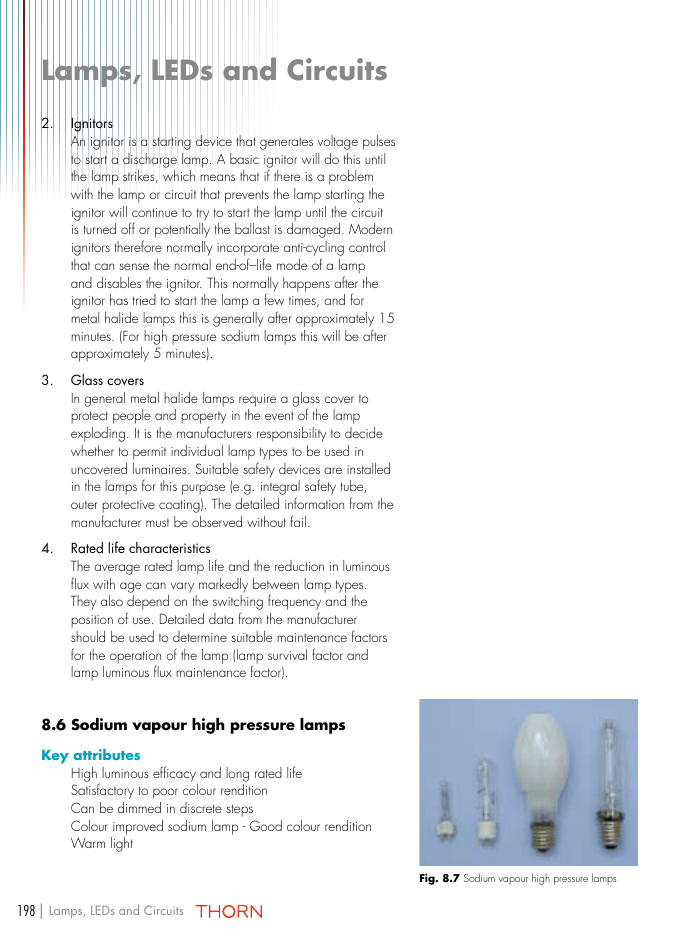Lamps, LEDs and Circuits
advertisement

Lamps, LEDs and Circuits 2. Ignitors An ignitor is a starting device that generates voltage pulses to start a discharge lamp. A basic ignitor will do this until the lamp strikes, which means that if there is a problem with the lamp or circuit that prevents the lamp starting the ignitor will continue to try to start the lamp until the circuit is turned off or potentially the ballast is damaged. Modern ignitors therefore normally incorporate anti-cycling control that can sense the normal end-of–life mode of a lamp and disables the ignitor. This normally happens after the ignitor has tried to start the lamp a few times, and for metal halide lamps this is generally after approximately 15 minutes. (For high pressure sodium lamps this will be after approximately 5 minutes). 3. Glass covers In general metal halide lamps require a glass cover to protect people and property in the event of the lamp exploding. It is the manufacturers responsibility to decide whether to permit individual lamp types to be used in uncovered luminaires. Suitable safety devices are installed in the lamps for this purpose (e.g. integral safety tube, outer protective coating). The detailed information from the manufacturer must be observed without fail. 4. Rated life characteristics The average rated lamp life and the reduction in luminous flux with age can vary markedly between lamp types. They also depend on the switching frequency and the position of use. Detailed data from the manufacturer should be used to determine suitable maintenance factors for the operation of the lamp (lamp survival factor and lamp luminous flux maintenance factor). 8.6 Sodium vapour high pressure lamps Key attributes High luminous efficacy and long rated life Satisfactory to poor colour rendition Can be dimmed in discrete steps Colour improved sodium lamp - Good colour rendition Warm light Fig. 8.7 Sodium vapour high pressure lamps 198 | Lamps, LEDs and Circuits Lamps, LEDs and Circuits Key application areas Industrial Street lighting Colour improved sodium lamp - Retail areas How they work The discharge in the linearly extended ceramic discharge tube is defined by sodium, so the light is yellowish and only suitable for certain applications although colour improved versions of the lamp do exist, An ignitor is needed to switch on the lamp (although some lamps have a built-in ignitor and do not need any external starting aids), and the current must be controlled by a ballast. Note, sodium vapour low pressure lamps generate poor quality yellow light with extreme high efficacy. They are often used for street lighting. 8.7 Mercury vapour lamps Key attributes No starter required, just a ballast Satisfactory to poor colour rendition Can be dimmed in discrete steps Low efficacy Key application areas Industrial Street lighting Walkways Fig. 8.8 Mercury vapour lamps How they work The almost obsolete high-pressure mercury lamp is actually the forerunner to the modern metal halide lamp, although it provides poorer colour rendering and efficacy. The lamps can be started at mains voltage, and so only need a ballast to limit the current. Lamps, LEDs and Circuits | 199


